
10 student-directed learning exercises to try with Paper™
Most of us don’t enjoy feeling like all of our choices are being made for us. It’s probably safe to assume that many students feel the same way.
Student-centered learning addresses this concern, and the related concept of student-directed learning empowers learners by incorporating more student-led decision-making into the learning process. Instead of simply moving through prescribed lessons, learners can take greater ownership of their education when teachers create new opportunities for students to exercise choice throughout the school day.
[READ: “Utah’s Ogden School District drives student-centered learning with 24/7 educational support”(case study)]
Here, we’ll explore what student-directed learning is and how teachers and students can use the Paper™ platform—and a few exercises we’ve created—to help facilitate such opportunities.
What is student-directed learning?
Student-directed learning refers to an instructional strategy whereby students are empowered to make their own decisions about important aspects of their education. These choices can range from setting their own learning goals to deciding how they will pursue such objectives.
Keep in mind that students are not strangers to self-directed learning. As EdSurge reported in an interview with Project Tomorrow CEO Dr. Julie Evans about what high school students are learning outside the classroom, teens say they often pursue a wide variety of subjects on their own. Some focus on practicing how to use new technology while others dive deeper into topics from school that they want to explore in greater depth.
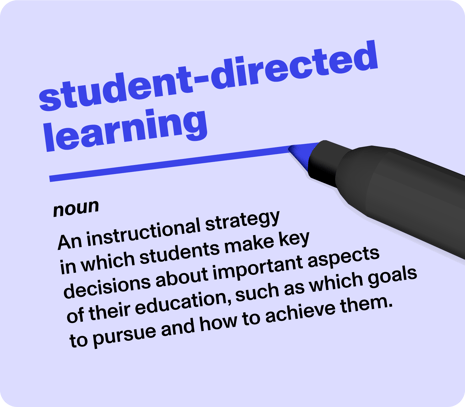
But can teachers harness the passions of these self-motivated learners while still ensuring they grasp important standards? According to a recent write-up in Edutopia about student-directed learning in a Virginia high school, the answer may be yes. In James Wood High School’s RISE program—which stands for “research, independent study, and exploration”—participants benefited from flexible learning opportunities where students’ voices guided decisions about what and how they learned while the program also incorporated state standards.
Even without a dedicated program centered on the concept of student-led learning, teachers can still find ways to integrate more student choice into their lesson plans.
10 exercises to facilitate student-directed learning with Paper
Educators who are interested in cultivating a student-centered learning environment may be looking for more ways to promote personalized learning. Even when direct instruction is the primary mode of learning, handing decision-making responsibilities back to students can help engage their curiosities and tap into their intrinsic sense of motivation.
Paper can help. We’ve created several learning exercises that promote student-directed learning, and all of them emphasize opportunities for students to discuss their work with tutors on the platform. Many of these exercises can be used in conjunction with classic active-learning activities, such as think-pair-share prompts, small-group discussions, and minute papers.
In addition to these learning activities, remember that Paper is always there to help. No matter what questions your students have, our tutors can help them learn more about their interests and curiosities.
1. Explore the animal kingdom
[DOWNLOAD: “Animal research project”]
In this learning experience, which can be modified to suit your needs, students will gather information about an animal of their choosing. Working with their tutor, they’ll share information and get feedback about important findings related to the animal they’ve selected—from where it lives to what it looks like and more. For an added element of self-directed learning, students can choose how they’ll present their findings to the class.
2. Learn about a new country
[DOWNLOAD: “Country research project”]
The world is vast! Your students are certain to find a country that sparks their interest. Maybe they have a personal connection to a different part of the globe, or perhaps they’ve just always wanted to learn more about a specific culture. For this exercise, student participation will center on researching a country and deciding how to report back on important findings after working with a Paper tutor.
3. Conduct a character analysis
[DOWNLOAD: “Friend or foe?” (elementary school)]
[DOWNLOAD: “Characterization analysis” (high school)]
Student-centered approaches to learning can benefit all grade levels! These character analysis exercises encourage students to select a fictional character that interests them. Then, they’ll discuss what important details the author reveals about who this character is and how the writer goes about revealing this information. Younger students can discuss how they’d feel about meeting the character in real life, and learners in later grades can talk about examples of direct and indirect characterization.
4. Complete a biography
[DOWNLOAD: “Biography blastoff”]
Who inspires you? Which historical figure fascinates you the most? The answers your students provide to these questions can spur creative thinking, self-directed learning, and a fun writing project to share what they’ve uncovered. Biographical subjects can range from influential celebrities to prominent sports figures, historical leaders, or even family members. Students can decide which research methods best suit their subject of study and their desired outcomes, from interviewing somebody about their life to consulting news articles or reliable encyclopedias.
5. View history from a new perspective
[DOWNLOAD: “A moment in history”]
Offering students the chance to explore things from another person’s point of view can be a great way to practice critical thinking skills and promote active learning. In this exercise, students select a historical event or a period in time that interests them in some way. After researching the topic, learners are encouraged to compose a journal entry from the perspective of a person who was present at the time, role-playing as an active firsthand participant in historical events.
6. Practice making inferences
[DOWNLOAD: “Book inferencing”]
We all know you shouldn’t judge a book by its cover. But can you use your observational skills to infer what the book might be like based on the details that are included there? Perhaps! This activity encourages students to read between the lines and make predictions. After completing the first part of the exercise, they’ll want to pay close attention as they read. This will help them find out if their initial thoughts were on track. Our inferencing exercise promotes thoughtful reflection and active engagement with a text of the student’s choosing.
7. Share a story
[DOWNLOAD: “Summertime short story”]
Whether learners encounter this exercise in a student-centered classroom during the school year or at home over their summer break, it’s sure to help them flex their storytelling skills while learning about narrative structure. Tutors can help young authors brainstorm plot points and vital story elements, such as the characters or the setting. Then, after submitting their work to the Review Center, they can get additional feedback from tutors to further refine their writing.
8. Explore your strengths
[DOWNLOAD: “Own your strengths”]
Academic achievement is important, but one thing we’ve learned from the whole-child approach to education is that students are multidimensional individuals. This exercise, geared toward high school students, is intended to help learners get in touch with what they love doing and to use this reflection as a window to better understand where their strengths lie. What skills and abilities do they feel like they pick up most naturally? This process can help students explore how to lean into their unique talents.
9. Take a virtual road trip
[DOWNLOAD: “Roadtrip Nation’s powerful stories reflection”]
[DOWNLOAD: “Roadtrip Nation: What’s your road?”]
[DOWNLOAD: “Career exploration”]
Drawing on material created by Roadtrip Nation, this series of exercises is intended to help students explore career opportunities that interest them, develop a potential road map, and consider what it would be like to work in a particular field. Students can discover their dreams, research their passions, and think about higher education opportunities or training requirements they might wish to pursue.
10. Fill out a graphic organizer to follow your own curiosities
[DOWNLOAD: “SPACECAT analysis worksheet”]
[DOWNLOAD: “ACAPS analysis worksheet”]
[DOWNLOAD: “SOAPStone analysis worksheet”]
When students set their own educational goals, sometimes the right graphic organizer can help them put their thoughts into place and hone their problem-solving abilities. With the support of an instructional aid, students can critically examine a text to better understand its content and context. Providing students with the choice to select the graphic organizer that best suits their needs can also help promote student-directed learning.
The Paper platform: Inquiry-based learning for student-directed discovery
Incorporating the exercises we’ve shared here into your lesson plans is one way to help promote student engagement, but Paper is there for your students no matter what they’re working on. Tutors are available on the Paper platform 24/7 to help learners explore the topics that fascinate, puzzle, and maybe even—from time to time—frustrate them.
We’re always creating new activities for teachers to try out in the classroom. Log in to your dashboard and visit the Resource Center for more inspiration.
Don’t have Paper in your district? Check out our advocacy kit today, and make your voice heard.

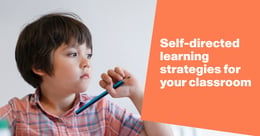
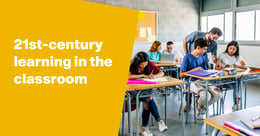
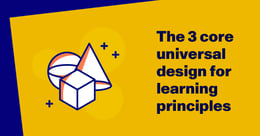
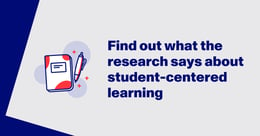
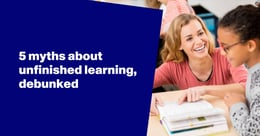
![3 ways game elements can drive educational engagement [Infographic]](https://paper.co/hs-fs/hubfs/Paper-Blog_3-ways-game-elements-can-drive-educational-engagement.jpg?width=260&height=136&name=Paper-Blog_3-ways-game-elements-can-drive-educational-engagement.jpg)